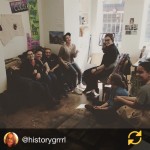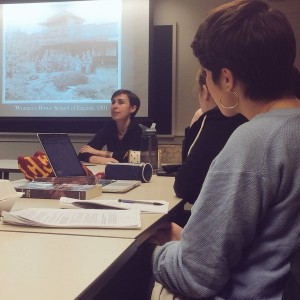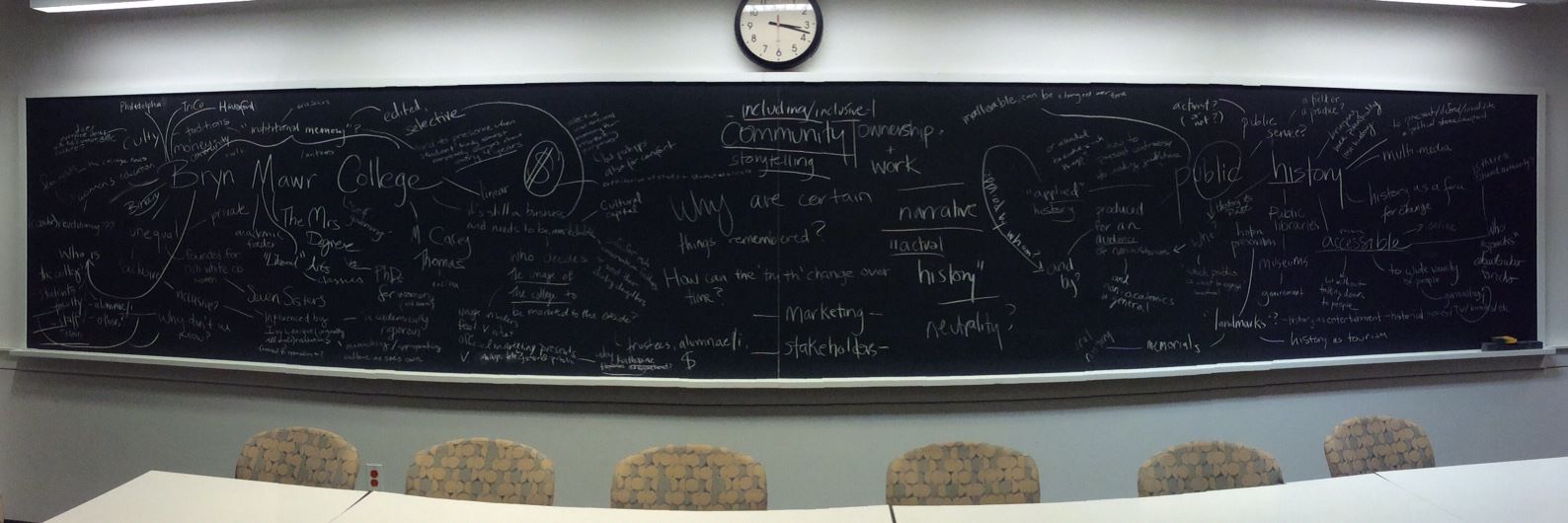Author Archives: Monica L. Mercado
Edith-Anne as Public History? (Discuss)
Samplers were once how young girls showed their skill, modesty & marriageability.
But Edith-Anne didn't give a shit pic.twitter.com/A4Cp4LtGzg
— Ian Duhig (@ianduhig) April 10, 2016
Understanding Campus History: A Final Project Provocation
“I cannot assume that I have solved any problems by asking questions and listening…but I can say I am attempting to shift the type of resources that future historians have to understand this moment in time in Philadelphia.”
— Erin Bernard, “Of angels, doves, and oral history: Ethics and trucking in Philadelphia,” Art & the Public Sphere 4.1-2 (2015): 109.
What would it mean to replace “Philadelphia” in this sentence with “Bryn Mawr College,” and how might your projects reflect that?
New Readings for March 29th
I’ve added a few documents from Erin Bernard, founder of the Philadelphia History Truck, who we will be visiting on Tuesday in West Philly. Be sure to take a look at this image too, documenting her process. We have lots to talk about — and maybe we’ll find some inspiration for our BMC history project proposals!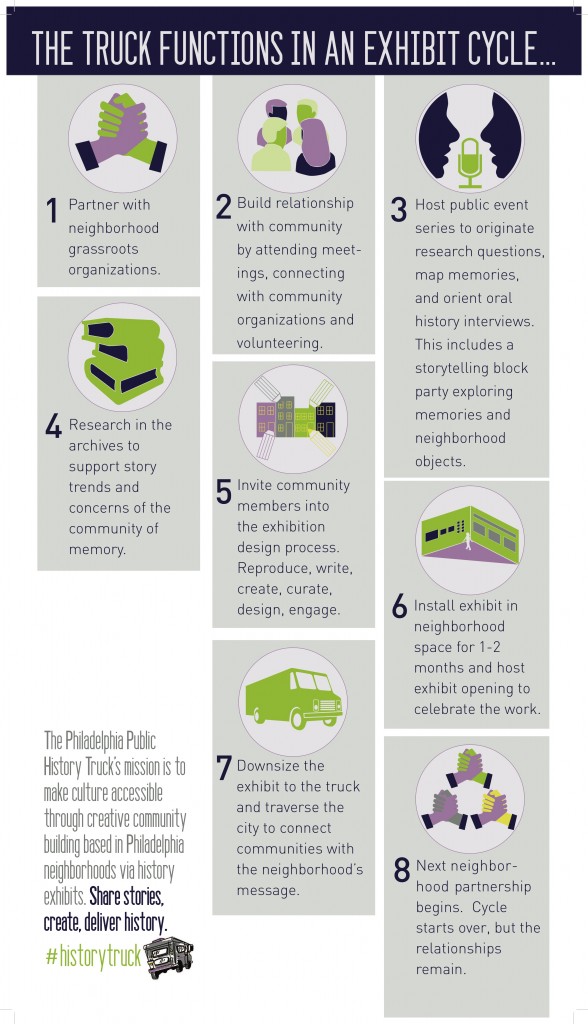
Add Women and Stir?
Historian Michelle Moravec, our neighbor at Rosemont, has made public a presentation she gave last week on women’s history and Wikipedia. Who is a notable woman? Read more:
The Never-Ending Night of Wikipedia’s Notability Woman Problem
I post this not only because of our recent meeting with Jami Mathewson of the Wiki Edu Foundation but because of this nagging question I have about Ebony and Ivy — which you may have heard if you saw me at the Community Day of Learning last Tuesday. What would it look like to take seriously women’s and gender history in campus histories? Can campus histories be intersectional? [I think you know one part of my answer, or, why I find Dean Spade’s BCRW talk an important intervention.]
More in class!
Everything Old is…Blue Again?
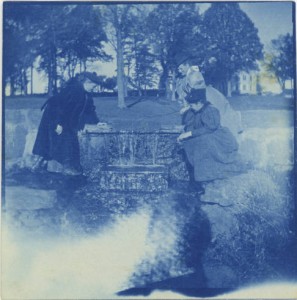
Bryn Mawr Students from the Class of 1898, via Bryn Mawr College Archives.
Given our questions raised last Tuesday about cyanotypes, the photographic printing process that produces a blue print, I thought some of you might like to see this piece from Friday’s New York Times: “Photography’s Blue Period is Making a Comeback.”
The article promotes a new exhibition at the Worcester (MA) Museum of Art on view through April, “Cyanotypes: Photography’s Blue Period.”
“Is History Written About Men, By Men?”
Are you reading this blog post? Great! Remember that your first contribution to the blog is due Sunday night, before our February 2 class. Looking forward to more posts and comments! –MM
* * *
During class today, writer Janice Nimura mentioned two recent posts on Slate and Bustle about popular history books, and to read more, here are the links:
- Andrew Kahn and Rebecca Onion**, for Slate: “Is History Written About Men, by Men?” (January 6, 2016)
- Kristian Wilson, for Bustle: “25 History Books Written By Women” (January 20, 2016)
** On Twitter, Rebecca Onion, who is the History writer for Slate, runs Slate Vault, and is an American Studies Ph.D., is doing great things under the wide umbrella of history in public: check out her feed @RebeccaOnion. If you think you’d like to talk to her at some point in class, let me know, and we’ll invite her!
Public History meets Bryn Mawr Histories
Image
History in Public Syllabus, v.1
The syllabus for History in Public is now online; registered students will have access to the reading list shortly.
I have deliberately left space in the syllabus to pursue new interests as they develop over the semester, also leaving open the possibility for additional guest speakers and site visits. Taking inspiration from Jesse Stommel’s digital studies course, we will revise and re-write the syllabus as we go, and, as Jesse suggests, discover what we’ll learn together as we learn it, questioning what we’ll do even as we begin to do it.
Finally, please note that the course is not intended to offer a comprehensive history of Bryn Mawr College; instead, I have chosen moments in time that are especially fruitful for thinking about the intersections of race and gender in the archives, as we explore possible ways of sharing those histories in public. I will continually add to (and crowdsource!) the Research Resources and Digital Collections page to aid students in their exploration of Bryn Mawr’s history.
Welcome to History in Public!
Our first class meeting will take place on Tuesday, January 19 at 1:10pm in Dalton 25. Before class, I would like us all to take a look at a few resources from the National Council on Public History, which we will discuss on Tuesday along with the syllabus and semester goals.
What is public history, anyway?
If you have friends considering shopping the class, feel free to forward these links. I look forward to meeting you all next week.




